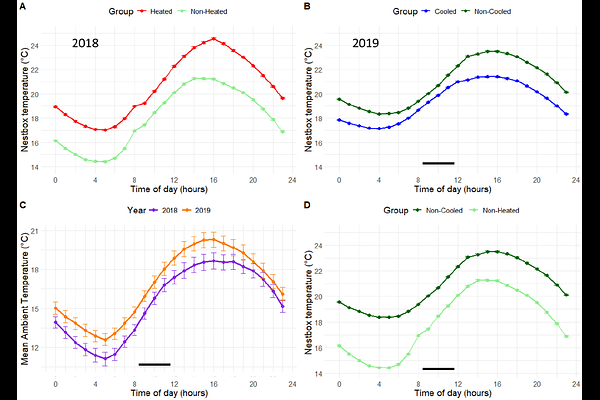Warm and cool temperatures decrease early-life telomere length in wild pied flycatchers

Warm and cool temperatures decrease early-life telomere length in wild pied flycatchers
Furic, C.; Marciau, C.; Hsu, B.-Y.; Cossin-Sevrin, N.; Fleitz, J.; Reichert, S.; Ruuskanen, S.; STIER, A.
AbstractClimate change represents a major challenge for avian species. It is characterized by an increase in average ambient temperatures, but also in occurrence of extreme weather events, such as heat weaves and cold snaps. These abrupt temperature changes can modify the immediate and long-term survival prospects of nestling birds, when their thermoregulatory capacities are still not fully developed. While immediate nestling survival can easily be measured, long-term survival is more challenging to evaluate. Early-life telomere length has been suggested as a potential biomarker of future fitness prospects. To evaluate the potential impact of changes in early-life temperature, we thus experimentally increased (ca. +2.8C) and decreased (ca. -1.7C) average nestbox temperatures in wild pied flycatchers (Ficedula hypoleuca) during nestling postnatal growth, and measured nestling telomere length before fledging. Shorter telomeres were observed in individuals exposed both to an experimental heating or cooling during growth. Our results suggest that long-term survival prospects or long-term performances of individuals exposed to abrupt changes in early-life temperature may be decreased.